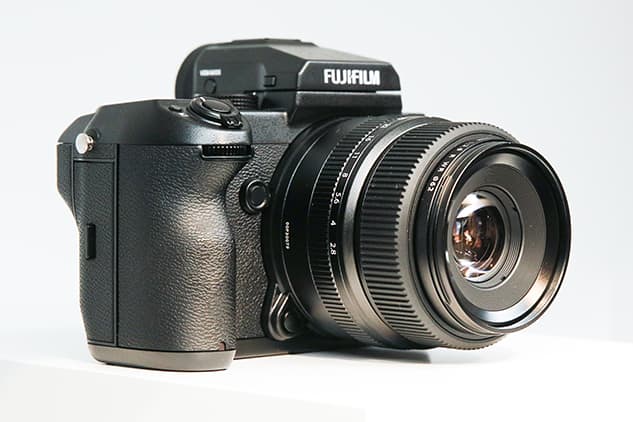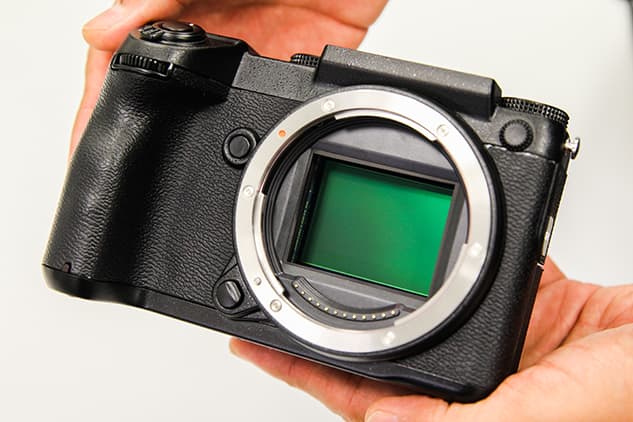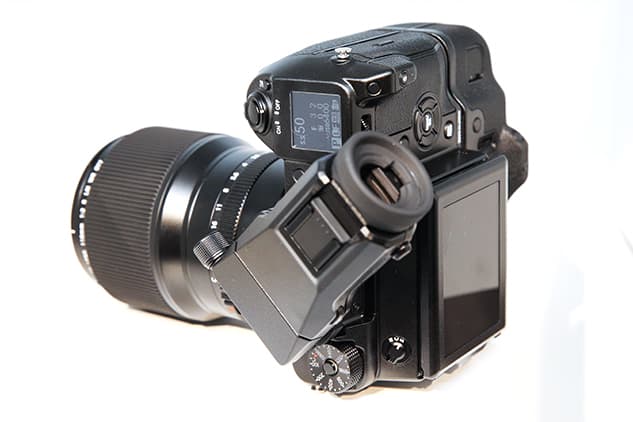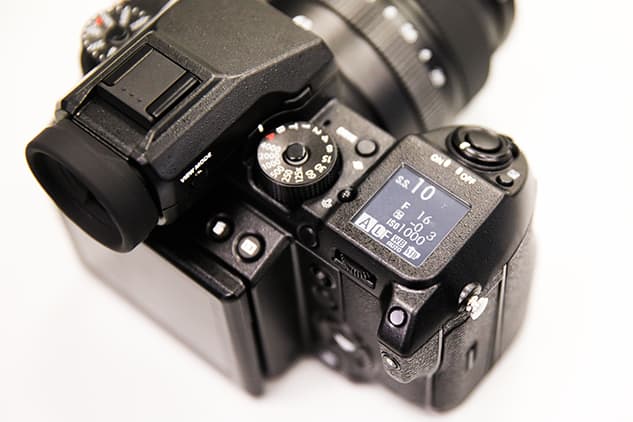Would they or wouldn’t they? These were the questions members of the photographic press were muttering to themselves moments before the big reveal at Fujifilm’s press conference at Photokina last year. Rumours of Fujifilm forgoing full frame and entering the medium-format market had been rife for months, and we waited with baited breath as the manufacturer quoted US photojournalist W Eugene Smith with: ‘The world just does not fit conveniently into the format of a 35mm camera,’ before unveiling the Fujifilm GFX 50S.
Not to be confused with the current X-series models, the GFX 50S is the first camera in an all-new medium-format mirrorless system that Fujifilm is calling its GFX series. As Fujifilm explains, the X series covers a wide range of subjects and is suited to a large majority of users, but for higher performance and the professional field, particularly high-end commercial work, medium format is required and there’s demand for a new system.

We had our first sighting of the Fujifilm GFX 50S at Photokina 2016
At the heart of the GFX 50S, just behind its newly designed ‘G mount’, which we’ll touch on shortly, lies a 51.4-million-pixel CMOS sensor with an effective 8,256×6,192-pixel resolution in the 4:3 aspect ratio. This G-format sensor is around 1.7x larger in area than a 35mm full-frame sensor, and is different to the X-Trans sensors we’re used to seeing in Fujifilm’s X-series models in that it is a Bayer-pattern filter array that uses specially shaped micro lenses and is created using an optimised silicon process. Four times the size of the sensors used in Fujifilm’s APS-C X-series cameras, we’re told the sensor is designed and customised by the company’s engineers, but is not manufactured by Fujifilm.

The GFX 50S adopts a large diameter/short flange back mount with a diameter of 65mm and a flange back of 26.7mm
Teaming up with the multi-aspect G-format sensor, which allows users to shoot in various aspect ratios that include 4:3 (default), 3:2, 1:1, 4:5, 6:7 and 6:17, is Fujifilm’s latest X Processor Pro – the same as that found in the X-Pro2 and X-T2. This promises to deliver natural tone reproduction and vibrant colour.
To prevent mirror shock and to ensure the form factor of camera is kept as small as physically possible, the GFX 50S features a mirrorless design with a medium-format focal-plane shutter that allows users to shoot as fast as 1/4,000sec. The benefit of having no leaf shutter has allowed the company’s lens designers to create optics that are more compact. Those worried that leaf-shutter lenses might not be able to be used with the GFX 50S can rest assured knowing they will be compatible, and without a mirror the lens mount has an extremely short flange distance of just 26.7mm.

By attaching the EVF-TL1 EVF tilt adapter, the angle can be changed to a maximum angle of 90° when shooting horizontal landscapes and ±45° when shooting in the portrait orientation
At the time of the development announcement, Fujifilm revealed they were working on six lenses to support the G mount. The three that have been announced at the same time as the Fujifilm GFX 50S are the GF 63mm f/2.8 R WR, GF 120mm f/4 R LM OIS WR macro and a zoom lens in the form of the GF 32-64mm f/4 R LM WR. Three more lenses will follow later, with the GF 110mm f/2 R LM WR and GF 23mm f/4 R LM WR expected around the middle of 2017 and the GF 45mm f/2.8 R WR arriving towards the end of next year. The good news is that these optics are going to be developed so they can be used with sensors exceeding 100 million pixels, safeguarding the system for the future models in the GFX series.
Design and handling
As you’d assume for a high-end model that’s not only out to target studio photographers, but also those who desire medium-format quality when shooting in the great outdoors, the GFX 50S features a solid magnesium-alloy body that’s weather and dust resistant. It inherits X-series DNA, with a build quality and finish that strike a clear resemblance with other Fujifilm mirrorless models.

The camera is equipped with a 1.28-inch sub LCD monitor on the upper command dial
There’s a tilting LCD screen at the rear, which features the same superb articulation mechanism as the X-T2, allowing you to pull it out and tilt it in both landscape and portrait orientation. Then there’s the viewfinder, which has a neat removable design. This will be part of the boxed contents, and studio photographers will also have the opportunity to buy an additional viewfinder that tilts and swivels by 90°.
Buttons and dials will be familiar to Fujifilm users, with two large dials controlling shutter speed and ISO on the top-plate. It’s great to see Fujifilm finally adding a ‘C’ setting to the ISO dial that allows users to override the dial and control the sensitivity quickly using the rear scroll dial that located just above the AF point toggle selector – another control inherited from the X-Pro2 and X-T2.

In order to withstand use in harsh environments, all FUJINON GF Lenses are dust-proof and moisture resistant, and feature a low temperature resistant structure down to -10°C
There’s a low-power screen on the top-plate for referring to key exposure settings, along with twin SD card slots at the side. We had hoped that between the news of the development announcement and the official release Fujifilm would add a threaded shutter button, allowing a screw-in-style cable release to be attached, but unfortunately this isn’t the case.
First Impressions
The first thing you notice when you get the GFX 50S in your hands is its relatively compact size. Medium-format cameras are typically associated with being big, heavy beasts to carry around, but the GFX 50S successfully bucks this trend. It’s not actually that much larger than a full-frame camera, and although it does feel marginally heavier than a Canon EOS 5D Mark IV, the ergonomics of its deep grip make it very secure and comfortable to hold. Users certainly won’t have second thoughts about using it away from the studio, and its robust qualities suggest it will perform just as well out in the field.

The UK launch of the GFX 50S provided the first opportunity to try the camera out
The optional vertical grip duplicates the controls to make portrait-orientation shooting feel much the same as shooting in landscape, but naturally this does come at the expense of extra bulk and added weight. The deep thumb rest at the rear with the quick menu button offset to the side has been well thought through. Raising the soft circular eyepiece to my eye revealed that the electronic viewfinder displays a clear, sharp image that, from first impressions at least, feels as if it’s on par with the X-T2’s in terms of resolution and response.

The exterior design basically follows the core concepts of the X Series system, refining the grip and upper control section to match the body which has been enlarged to fit the large size sensor
The GFX 50S feels rather like an X-series camera on steroids and after the early remarks about the price of the GFX 50S with the 63mm lens costing under $10,000 we can now report the official price of the camera will be £6,199 (body only). Prices for the first three lenses in the system have also been released. The Fujifilm GF 63mm f/2.8 R WR will cost £1,399, the GF 120mm f/4 R LM OIS WR macro will fetch £2,599 and the price for the GF 32-64mm f/4 R LM WR starts at £2,199.

Fujifilm officially announced the GFX 50S to the press on the 19th January 2017
Although we haven’t been given any information about when our review sample may arrive, we hope to bring you a full review of the Fujifilm GFX 50S soon.







